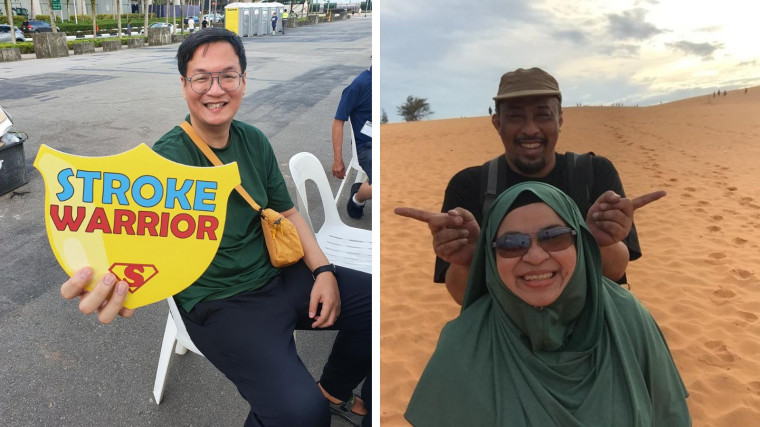|
Audio Version Available
|
One evening in 2021, he was trying to fix a kitchen rack when the simple task suddenly seemed impossibly difficult.
“I was tightening the screws when I felt exhausted, I couldn’t complete the task and had to call my 10-year-old daughter for help,” Kelvin Loon tells The Pride.
The 45-year-old general manager of a business consultancy agency dismissed the incident but when he woke up the next morning, he felt something amiss.
“I was extremely tired and when I tried to walk to my wife to tell her, I almost collapsed on her.”
Kelvin’s wife, June, noticed a tell-tale sign: The left side of his face was drooping.
She rushed him to the A&E. Kelvin was having a stroke.
In 2020, almost 9,000 people suffered a stroke in Singapore. This is an increase from 5,890 in 2010.
A stroke occurs when blood supply to the brain is cut off by a blockage (ischemic) or bleeding (haemorrhagic). When not treated in time, this often results in damage to the brain.
The Singapore National Stroke Association was set up in 1996 to provide a support system for stroke survivors and their caregivers.
Here are three of their stories.
Determination to recover: Kelvin Loon’s story
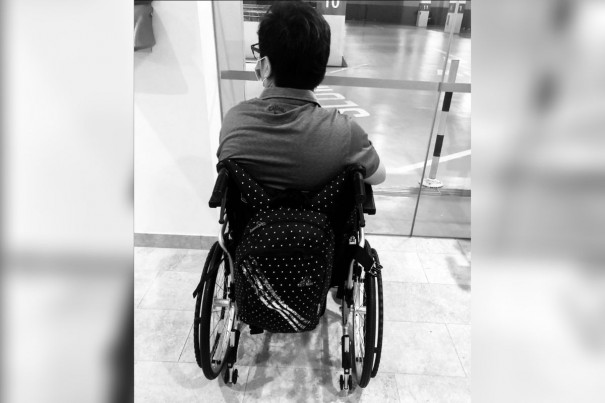
At the hospital, Kelvin’s symptoms were worsening by the minute.
“I started experiencing aphasia (a condition that leaves the victim unable to speak properly) and the left half of my body was paralysed. I just broke down and cried,” Kelvin recalls.
At that time, he was gripped by fear.
In 2007, his 58-year-old father had a stroke and died after four days in hospital.
Seeing Kelvin undergo the same condition was a scary moment for his family – his mother, wife, and daughter.
“It felt like we were reliving an experience we had with my father,” says Kelvin.
Since it happened during the peak of Covid-19, Kelvin’s family and friends couldn’t visit him in hospital.
It was even lonelier because during his first few days of his five weeks in hospital, he was too disheartened to video call his loved ones.
“I kept thinking to myself, ‘why me?’” says Kelvin.
His doctor had told him that he had a 30 per cent chance of experiencing another stroke, and that sentence kept haunting him, filling him with dread.
But he came to a turning point.
“I decided to reframe my thoughts to be more positive,” he says. “I decided to focus on the things I could do to ensure that I fall in the 70 per cent category of not getting a stroke.”
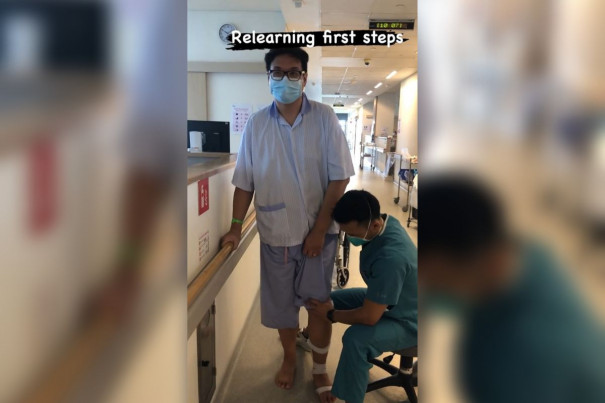
Apart from reframing his situation, Kelvin also refocused his efforts – to learn a new skill!
“This may sound crazy but while I was hospitalised, I picked up trading and even managed to make some money when I was bedridden,” Kelvin says with a laugh.
Kelvin was discharged after five weeks in hospital. Since the stroke affected the right side of his brain, the left side of his body was weak, leaving him in a wheelchair.
He went through an intensive recovery schedule, attending rehabilitation sessions five days a week.
Even on his days off rehab, he pushed himself to learn basic actions again, like how to step over a step or walking further without resting.
A month after leaving hospital, he stopped using the wheelchair and used a quad stick to move around instead.
So, what kept him going?
Kelvin says that his motto is “the choices you make are important”. He knew that he wanted to regain his health so he made the choices that can best help him in his recuperation journey.
With support from his wife and his mother, Kelvin returned to work seven months after his stroke.
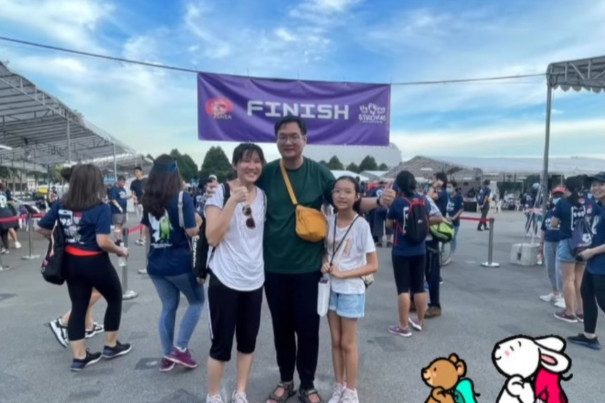
During his road to recovery, Kelvin decided to document his story on Instagram. He wanted to have a visual record of his progress to motivate him to persevere.
However, that wasn’t all he wanted to do.
“I also wanted to encourage others who are recovering from a stroke, to continue exercising,” says Kelvin.
View this post on Instagram
In Aug 2022, seeing Kelvin’s recovery journey, a friend, who is also a stroke survivor, encouraged him to join SNSA.
Since then, Kelvin has participated in sharing sessions and activities such as the monthly Let’s Get Fit programme, where volunteer physiotherapists teach stroke survivors rehab exercises.
“SNSA has been very instrumental in helping me break my milestones, I broke one of my biggest milestones when I completed Stepping Out for Stroke,” says Kelvin.
Stepping Out for Stroke, an annual 3km walkathon, is SNSA’s signature programme.
“During my time there, I saw many stroke survivors in different stages of recovery, trying their best to complete the walk. Some were even using a quad stick. I felt very touched,” Kelvin adds.
It motivated Kelvin more in his fitness journey. Now, he plans to pick up a sport to keep fit.
He has another reason to want to be back in good physical condition: The couple is expecting their second child!
In sickness and in health: Hisham and Aini’s story

In Sept 2021, Hisham Sulman had just dropped off a passenger when he got a headache and blurry vision.
The 55-year-old cabby decided to stop and get a friend to send him home.
He felt better at home, so it was only two days later that he went to a neighbourhood clinic for his headaches.
“The doctor told him that he just had high blood pressure and told him to go home to rest. But I had a gut feeling that something was not right, so I insisted on taking him to another clinic,” says his wife Aini, 45.
At the second clinic, Hisham’s headaches got worse and his blurry vision returned, so the doctor told him to go to the A&E.
“Since I didn’t display the more common stroke symptoms, I only got an MRI (magnetic resonance imaging) scan the next day,” Hisham recalls.
It was only then that the couple was told that Hisham had an ischemic stroke.
Other stories you might like

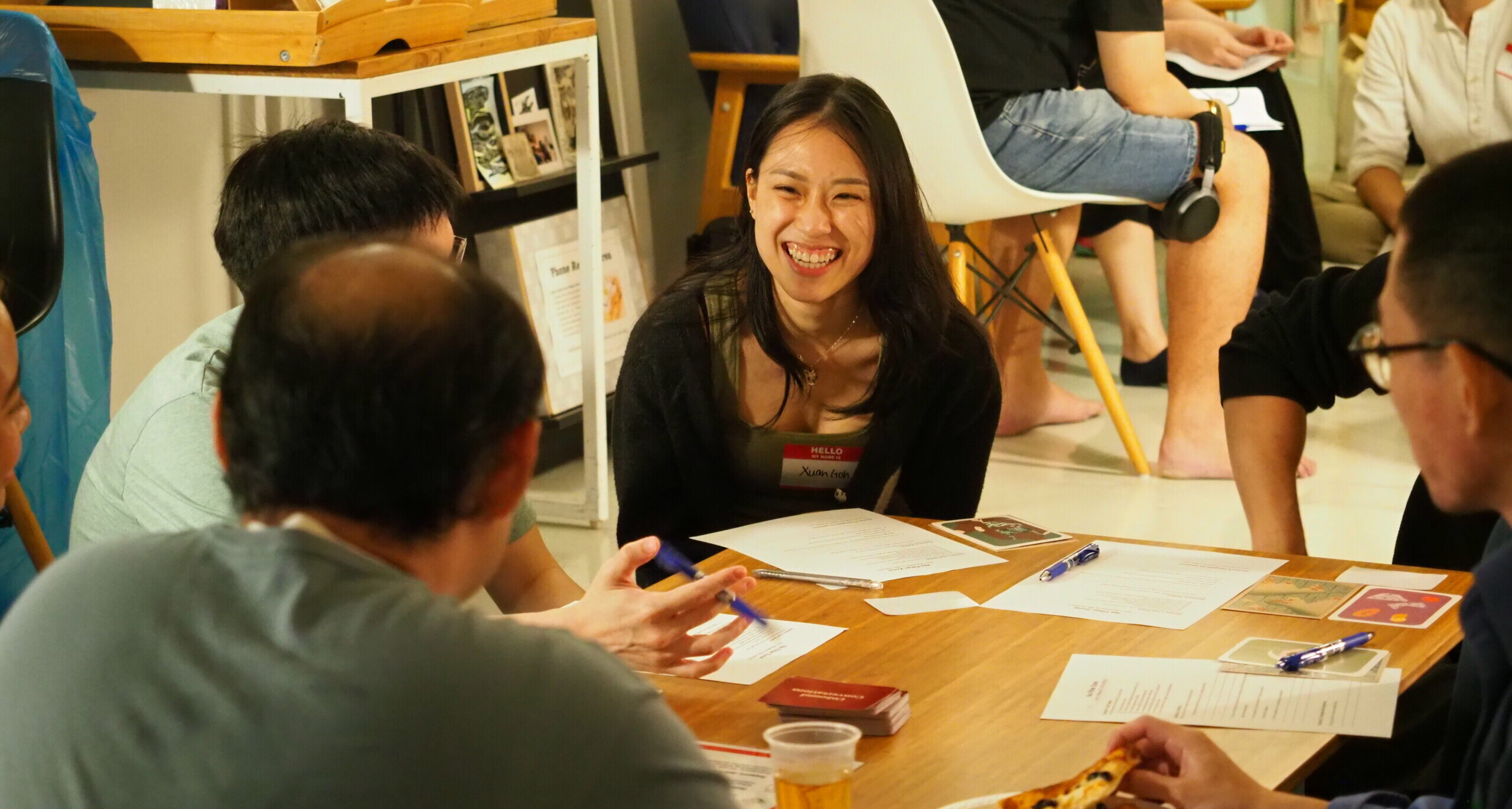
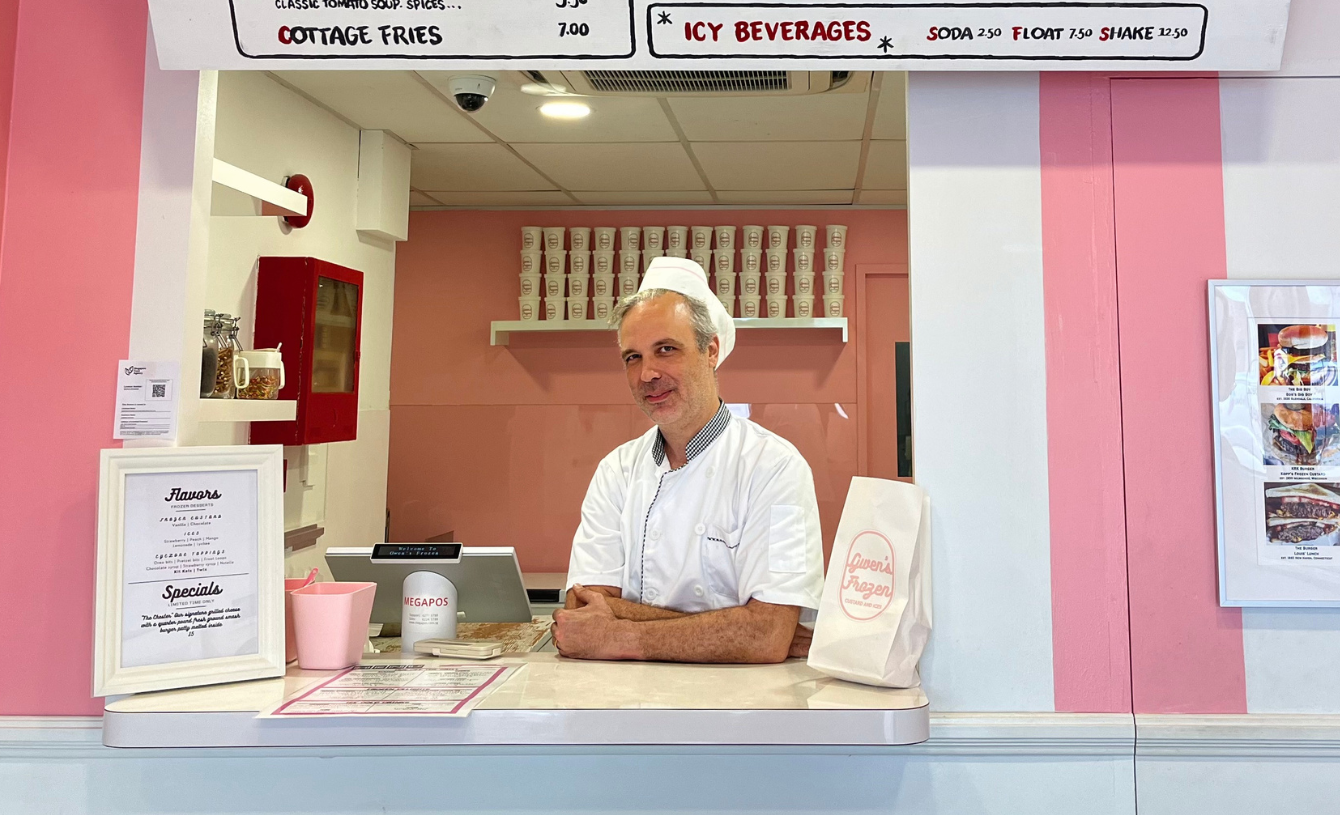

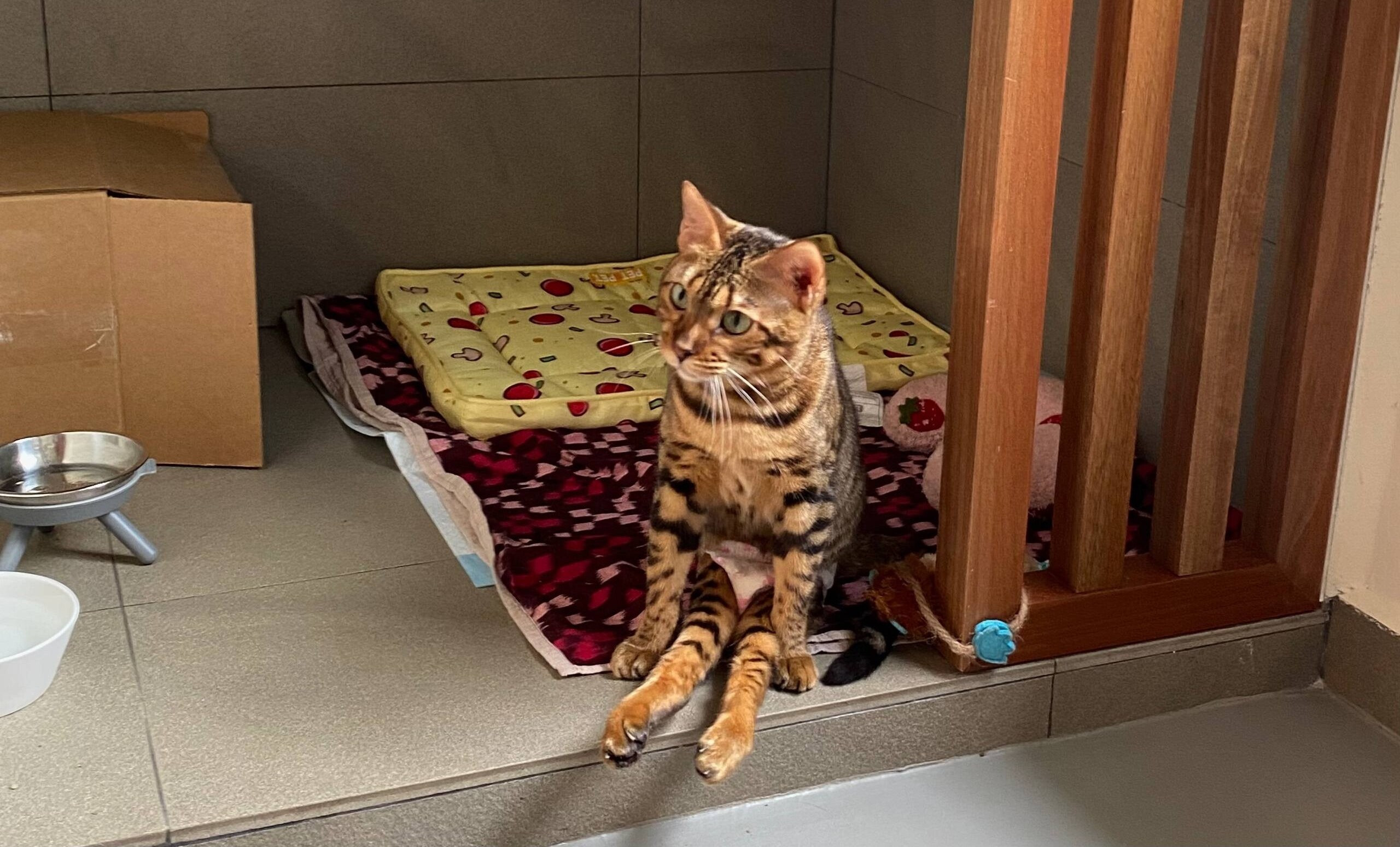
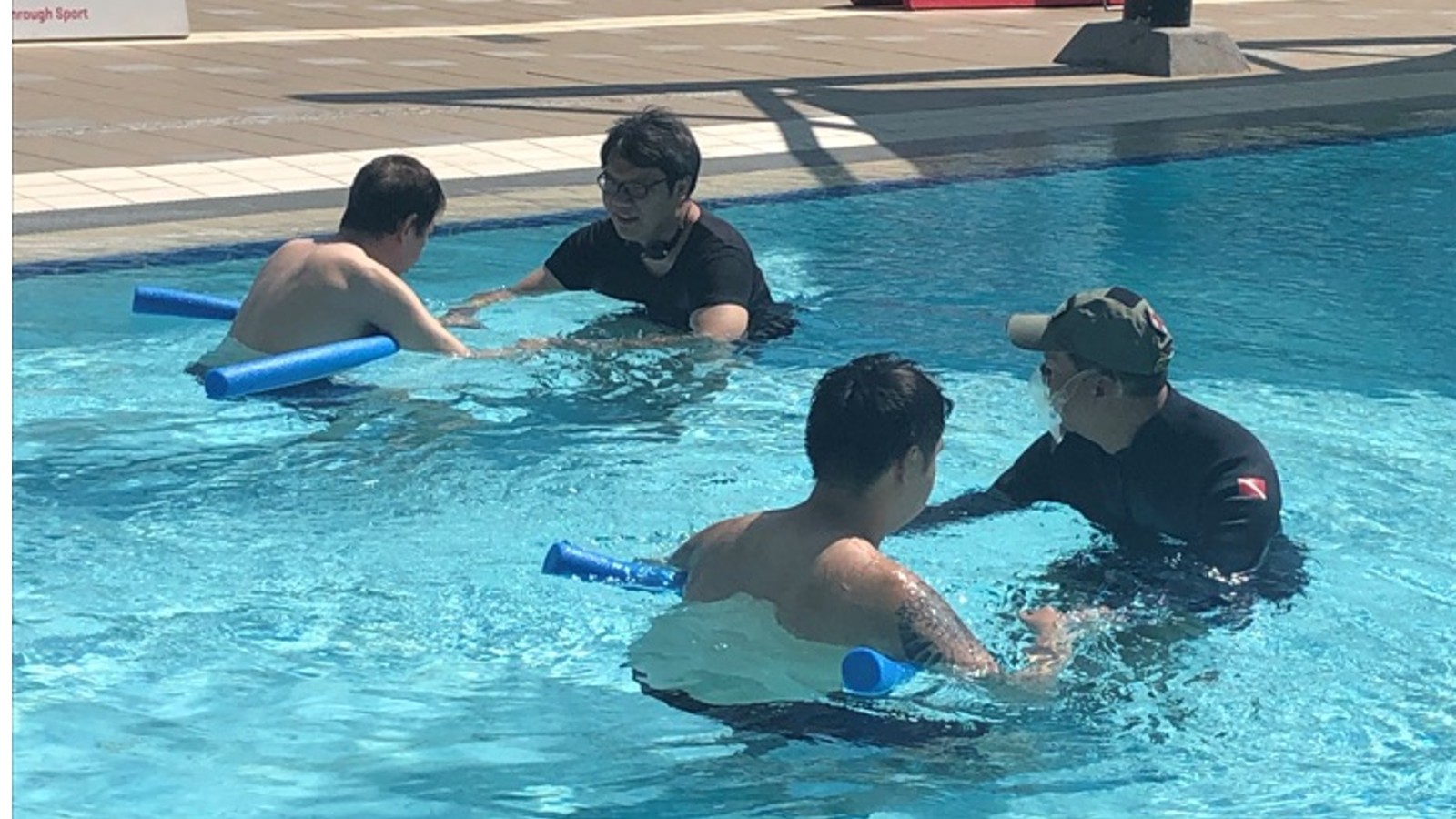
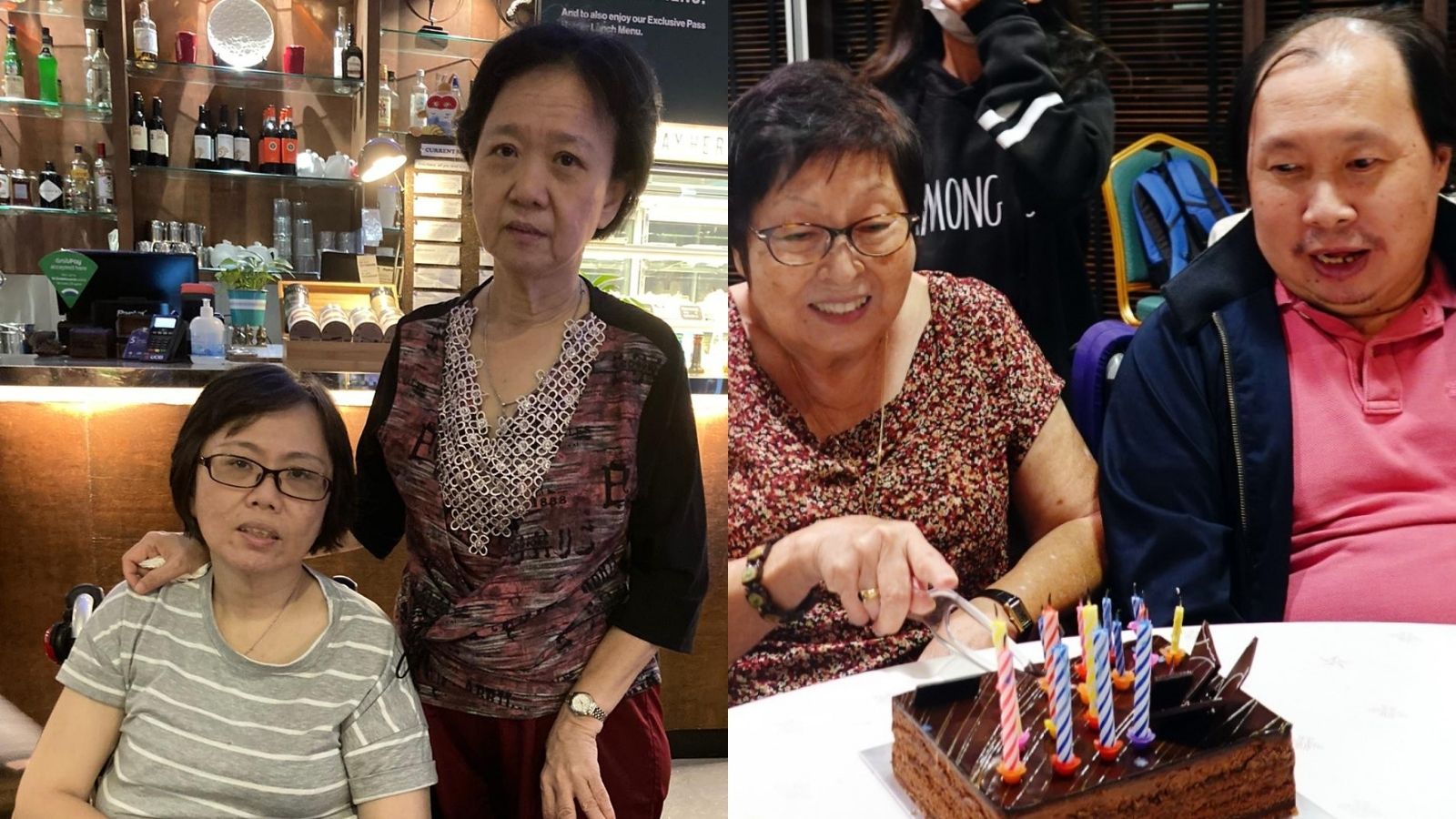
The news hit the couple like a bombshell.
“I felt like it was my fault for not encouraging him to go to the hospital at first,” says Aini.
Though Hisham didn’t feel weak, his stroke left him visually impaired: He experienced dyslexia, colour blindness, and hemianopsia (partial loss of sight in half of his visual field).
Not only that, the stroke also left him with short-term memory loss and aphasia.
To help Hisham recuperate, Aini stopped her home-based food business to care for him full time.
She taught Hisham how to read again to overcome his dyslexia.
“To help Hisham with his short-term memory, we frequently met with his friends to keep his brain active. When we went to the doctors in Mar 2022, they told us that Hisham’s memory is back to 98% of a normal person,” Aini says with a smile.
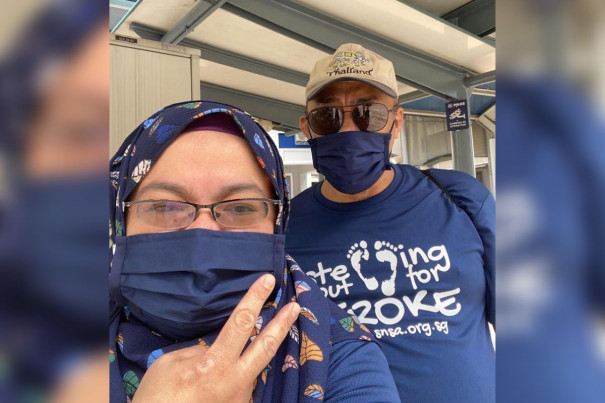
But during the early stages of his recovery, Hisham refused to socialise with others because he felt ashamed of his condition.
It was when Hisham was in hospital that the couple found out about SNSA.
“I thought to myself ‘I can’t do this alone, I need support’. So, I went online to search for support groups. I found SNSA,” explains Aini.
“SNSA helped me come out of my shell and regain my confidence,” adds Hisham with a laugh.
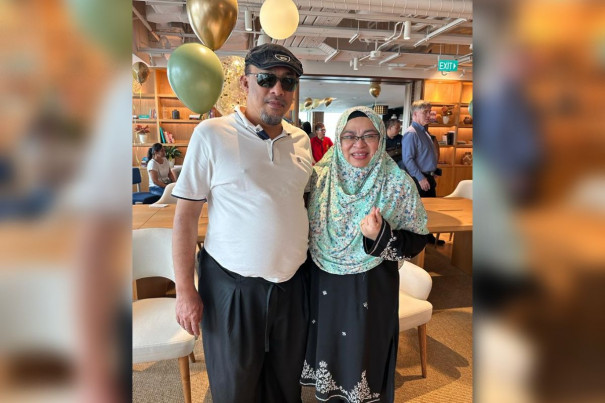
Aini and Hashim were assigned two befrienders at SNSA – a caregiver and a stroke survivor – who shared experiences, recovery tips and financial advice with the couple.
Since they joined SNSA, Aini and Hashim have participated in Stepping out for Stroke and SNSA’s annual Tea Party. At last year’s Tea Party event in December, Hisham even became a model for a day, doing a fashion show by local adaptive design brand Werable.
“Joining SNSA really helped make my caregiving journey and Hisham’s recovery journey smoother,” says Aini.
Dealing with blow after blow: Lora Ng’s story

After a long day at work, Lora Ng just wanted to wash up and go to bed.
But in the shower, she got a headache so intense that she got out of the bathroom to take some medicine.
She didn’t make it.
“I just lay on the floor in my towel because I felt so weak. I heard my son return home and called for help,” Lora tells The Pride.
Lora was sent to hospital by an ambulance.
Before the stroke, the 63-year-old was a 30-year veteran sales exec in the aviation industry.
After the stroke in 2019, she quit her job.
“I couldn’t accept going from being an independent individual to someone dependent on others,” says Lora.
She was paralysed on her left side and had to use a wheelchair. She also lost her voice and had to undergo speech therapy.
She was discharged after seven weeks in hospital, but Lora is still in rehab today. She is also shy about sharing her photos.
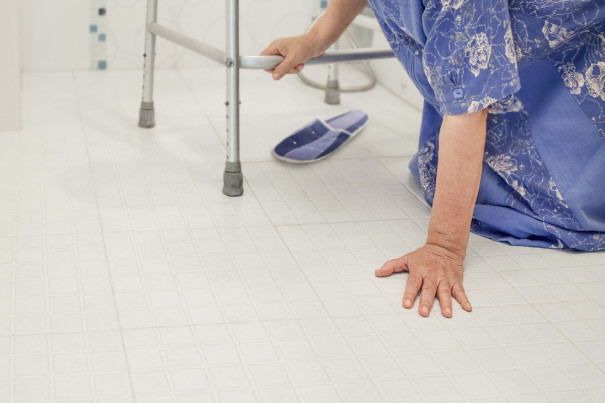
Two years after her stroke, in 2021, Lora was already walking but just as she was regaining her mobility, she had a fall.
“It was in the wee hours, so everyone was asleep. I wanted to go to the bathroom and I decided to try to go by myself, but I tripped in the toilet,” Lora recounts.
She was rushed to the hospital where doctors found that she had broken bones in her hip and ribs.
That put her in hospital for a month and back on a wheelchair.
“It felt like my recovery journey from the stroke had been reset,” says Lora.
During her hospital stay, doctor discovered that Lora had Stage 2 breast cancer and she underwent another surgery in Dec 2021.
“It really was a blow after blow, so it was very disheartening,” says Lora.
The good news is that Lora’s cancer is now in remission.
Other stories you might like





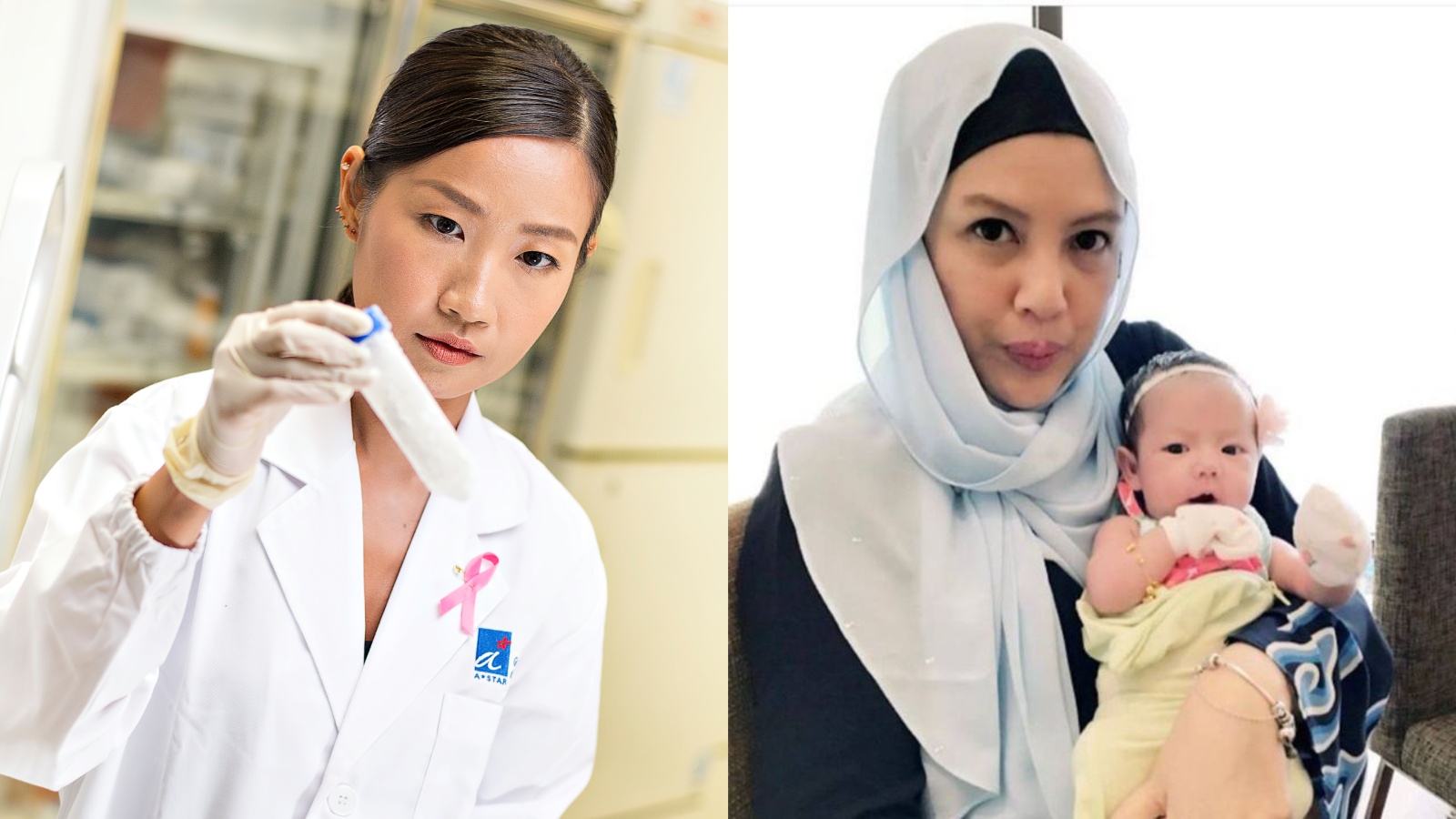
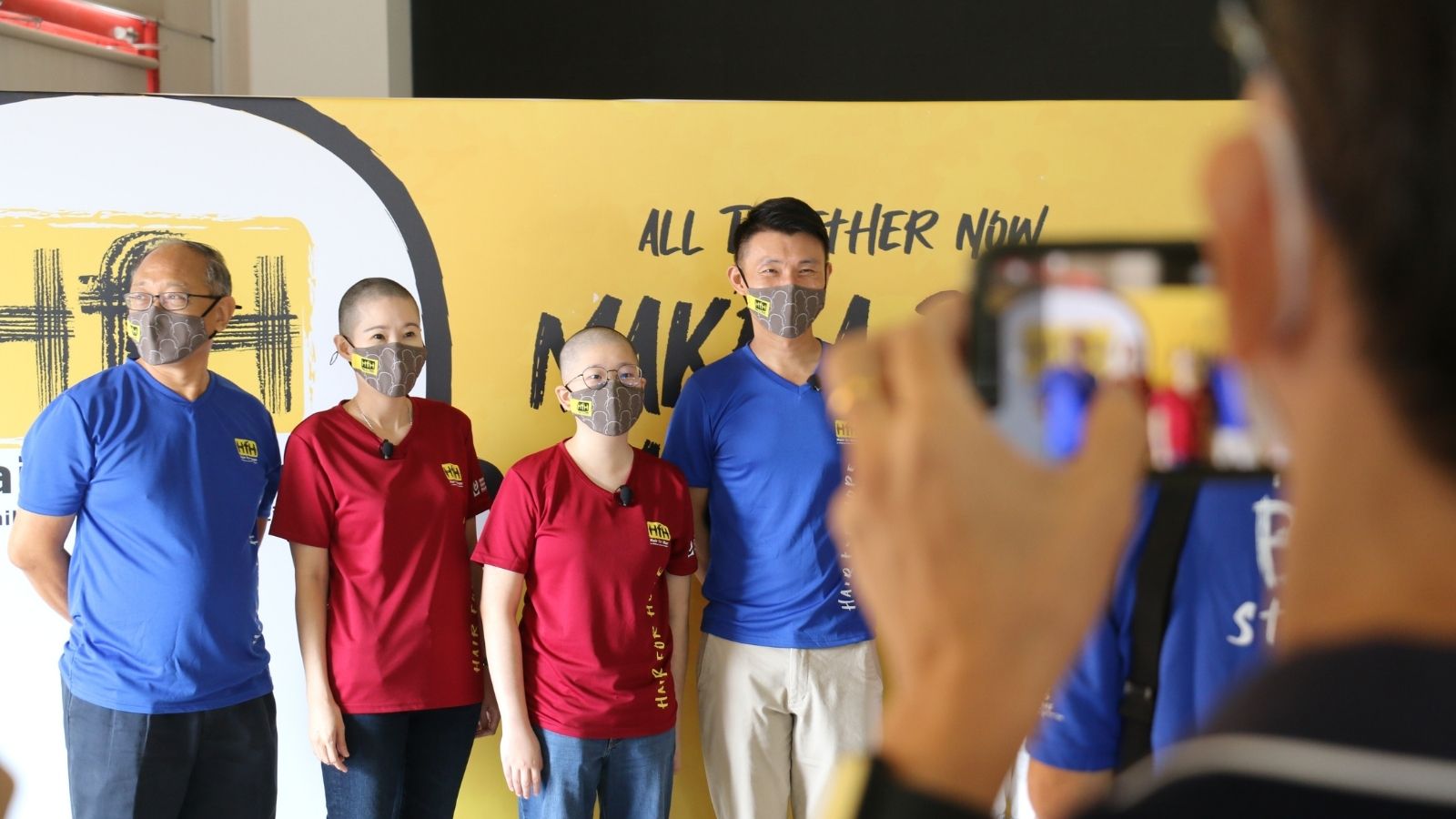
She admits that her journey hasn’t been easy, but her friends at SNSA helped a lot.
“I think SNSA is a meaningful support system as it really lets me know that I am not alone in my journey. Even though I mostly participate only in online activities, we have a very active group chat,” says Lora.
She’s also keeping herself active. Last year, Lora started participating in regular Pedal enAble cycling sessions, which teaches people with special needs and disabilities to learn how to ride a bike independently.
“I don’t want to just stay at home and feel bored, I want to keep active because life still goes on,” says Lora.
If you like what you read, follow us on Twitter and Google News to get the latest updates.
